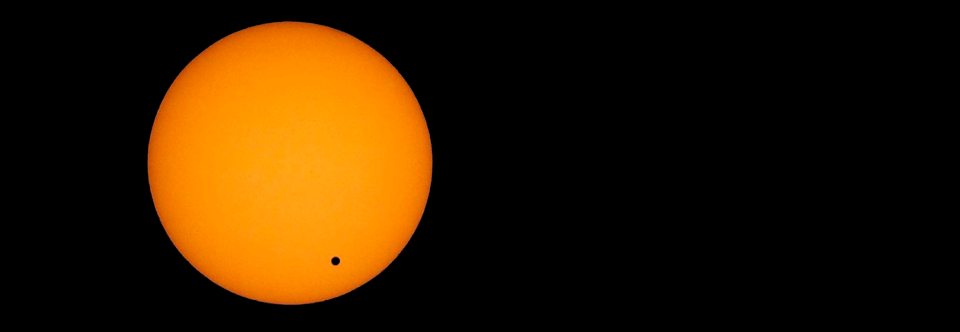What is it?
A transit of Venus occurs when the planet passes directly between the Earth and the Sun. Then, Venus can be seen crossing the disk of the sun as a circular black spot.
When will it occur?
From Los Angeles, the transit will be visible on Tuesday, June 5, starting at 3:06 pm and continuing until sunset at 7:08 pm.
From where can I see it?
In the US, the further west the better the view. California is one of the best places to see the 2012 transit on the US mainland. At UCLA, we will have several filter-equipped telescopes set up for the event, at the top of Janss Steps. We will also provide filters for viewing by eye. Please feel free to stop by anytime between the above times to join us for this once in a lifetime event!
Can it be seen without a telescope?
Yes, but only with adequate protection for your eyes.
Can I view it through a telescope?
Yes, it will look better this way, but only with a telescope properly equipped to reject most of the sun’s light and heat.
[box type=”info”]UNDER NO CIRCUMSTANCES SHOULD YOU LOOK DIRECTLY AT THE SUN WITH OR WITHOUT A TELESCOPE. ALTHOUGH 93 MILLION MILES AWAY, THE SUN IS SO POWERFUL THAT IT WILL CAUSE PERMANENT EYE DAMAGE AND BLINDNESS IN A FRACTION OF A SECOND. YOU WILL NEVER RECOVER. DO NOT LOOK AT THE SUN UNLESS YOU ARE SURE THAT YOUR EYES ARE PROTECTED FROM ITS LIGHT AND HEAT BY A PROPER SOLAR FILTER. SEE VIDEO BELOW.[/box]
What is the best way for me to see the 2012 transit?
If you are located in the Los Angeles area, the UCLA campus should be a good spot! (see “From where can I see it?”)
While looking by eye through a protected telescope is the most authentic way, the transit will also be webcast from various observatories around the world.
What if I miss this one?
You can catch the next one in 2117. Transits occur in pairs with a long gap between: the last one was in 2004, the next two are in 2117 and 2125. These long gaps occur because the orbit planes of Venus and Earth are not parallel, so Venus usually passes above or below the Sun as seen from Earth.
Can other planets transit the Sun?
Yes, Mercury shows transits but, being smaller and further away from Earth, these are harder to view. Only Mercury and Venus have orbits smaller than Earth’s and so can pass between us and the Sun.
Are transits useful?
Yes. Transits were used centuries ago to test calculations of planetary motion, and to determine the Astronomical Unit – the distance between the Earth and the Sun. Now, we use transits across the disks of other stars to discover extrasolar planets. Nearly 1000 exoplanets have been discovered in this way.
Lists of other Venus Transits
| Date | Time | Separation |
| Dec 7, 1631 | 5:19 | 939 “ |
| Dec 4, 1639 | 18:26 | 524 “ |
| June 6, 1761 | 5:19 | 570 “ |
| June 3, 1769 | 22:25 | 609 “ |
| Dec 9, 1874 | 4:07 | 830 “ |
| Dec 6, 1882 | 17:06 | 637 “ |
| June 8, 2004 | 8:20 | 627 “ |
| June 6, 2012 | 1:28 | 553 “ |
| Dec 11, 2117 | 2:48 | 724 “ |
| Dec 8, 2125 | 16:01 | 733 “ |
More Information
Earth and Space Sciences graduate student, Christopher Snead, talks about UCLA plans for the Transit of Venus:
http://www.youtube.com/watch?v=28JYIpZEcqs
CREDIT: 3D animation that shows an extrasolar planet orbiting a star ESA/Hubble (M. Kornmesser & L. L. Christensen)
Watch this short documentary about the Transit of Venus, by science filmmaker Maarten Roos.
http://vimeo.com/30313769
Composer and musician William Zeitler performs his original Our Last Transit of Venus for Glass Armonica and Orchestra. William composed the piece especially for the occasion of the Transit of Venus 2012.
http://vimeo.com/43369105
Maarten and William recently presented at the iPLEX lunch.
Follow Iplex
